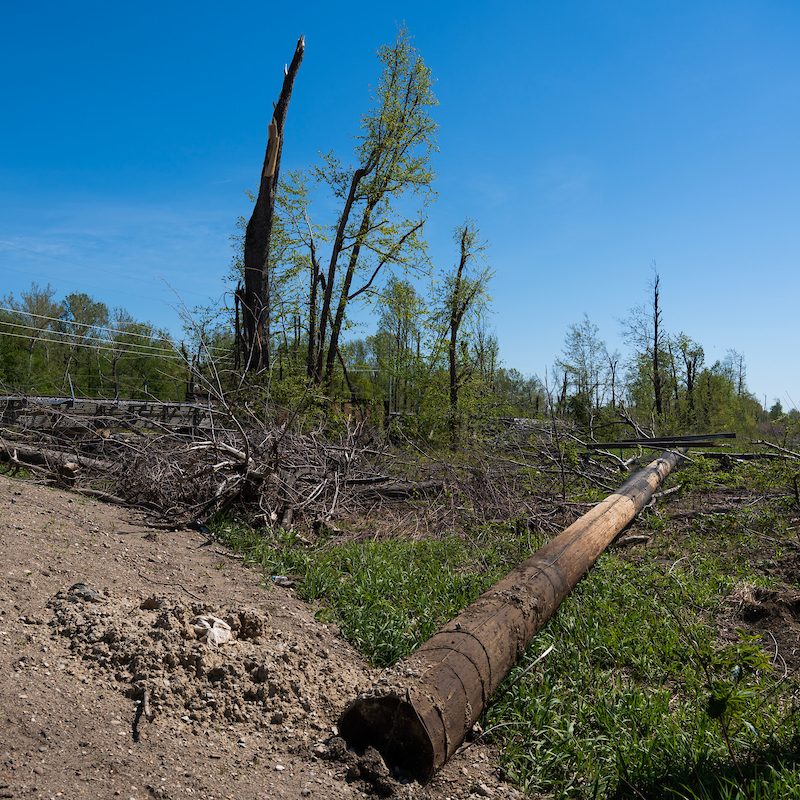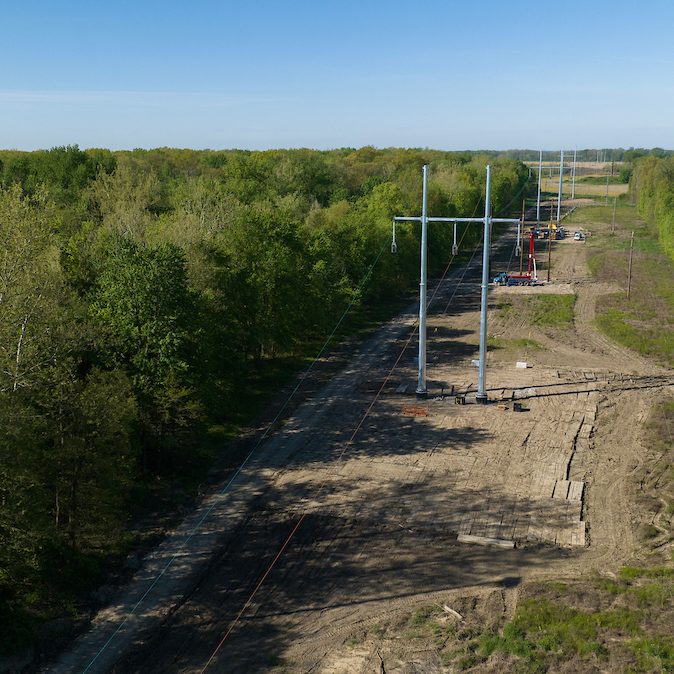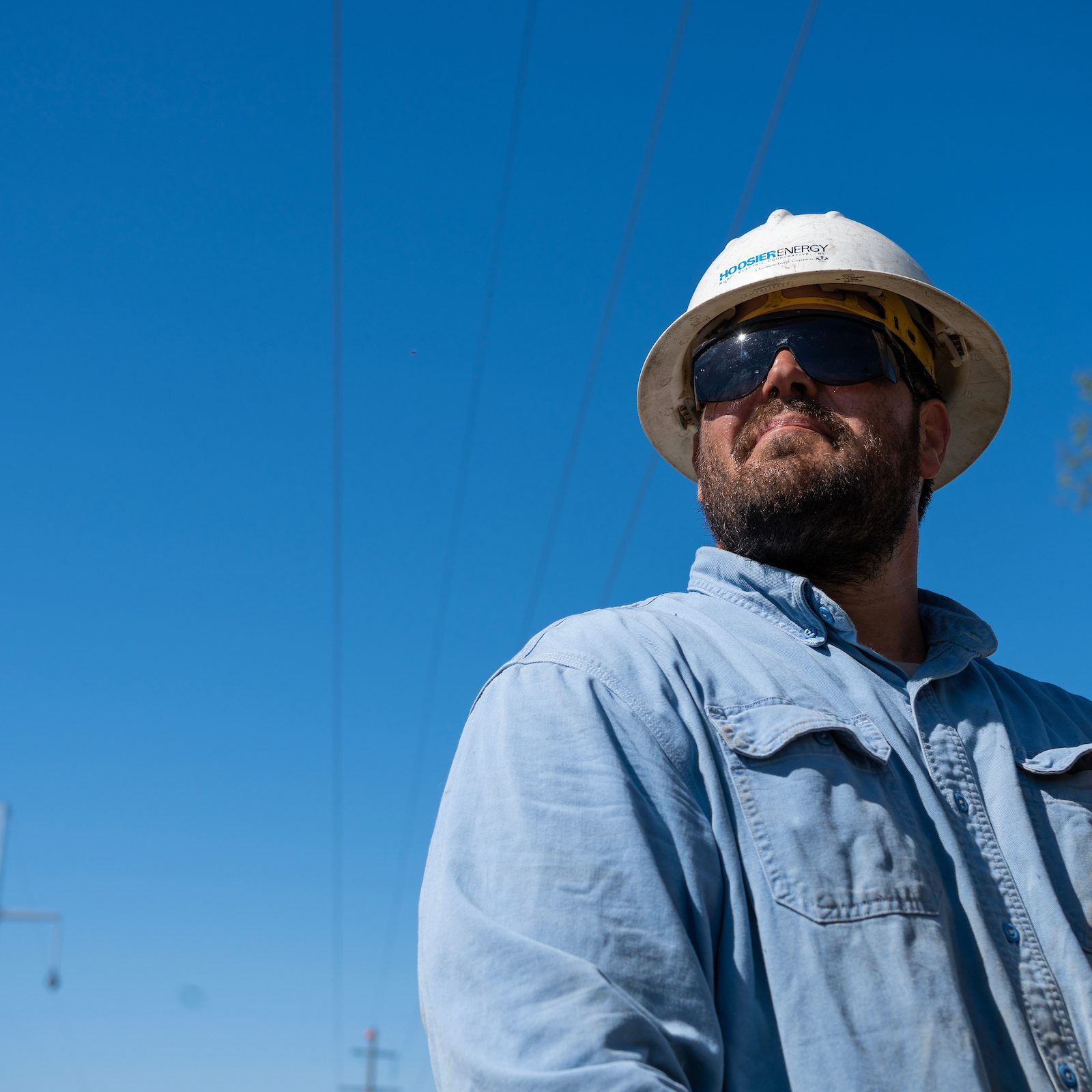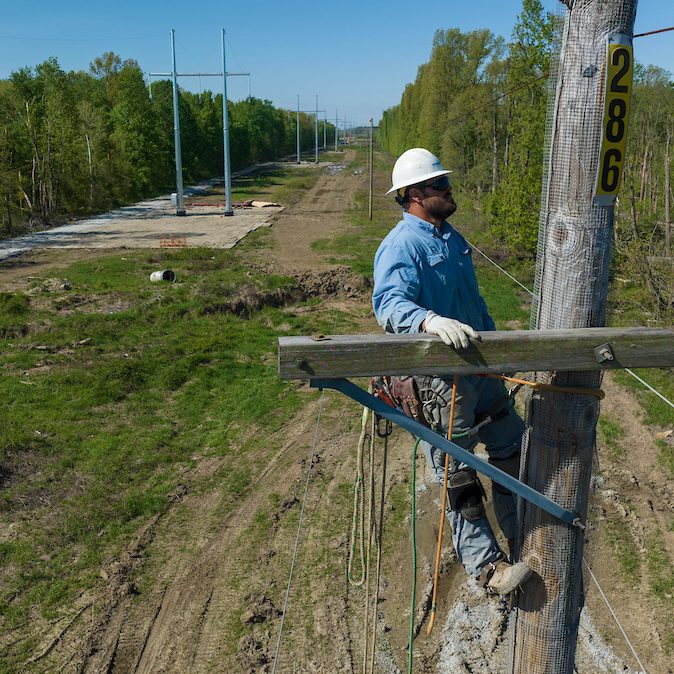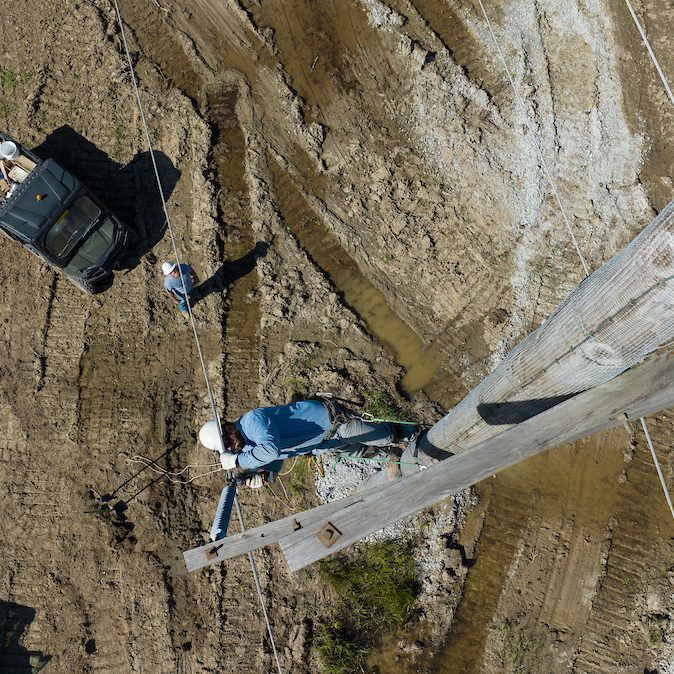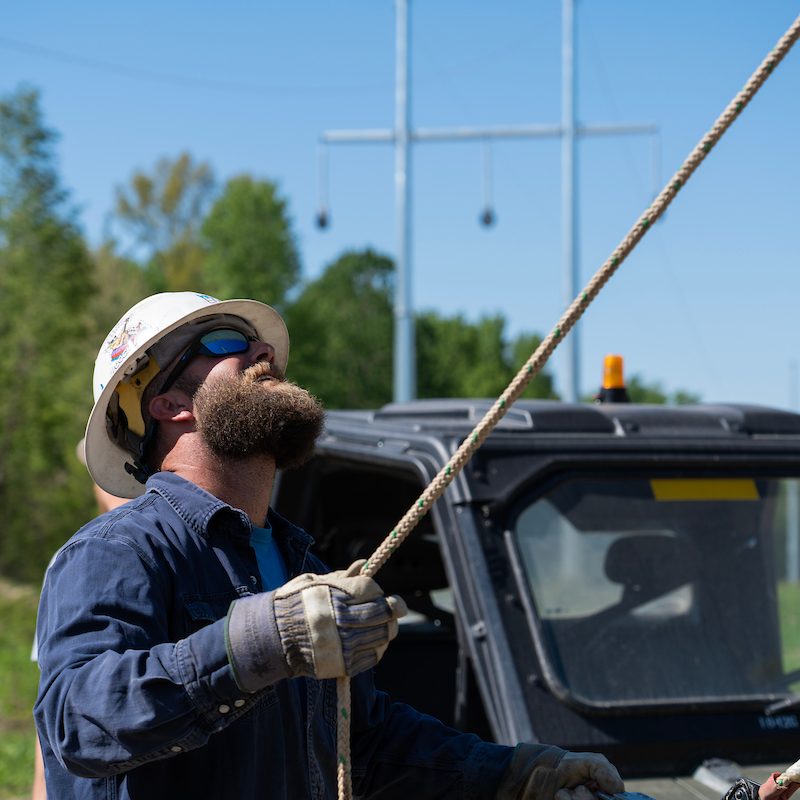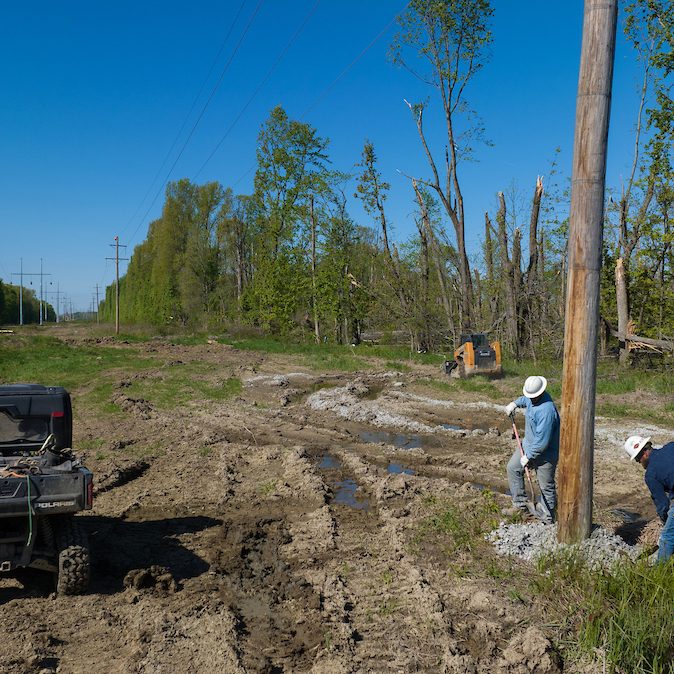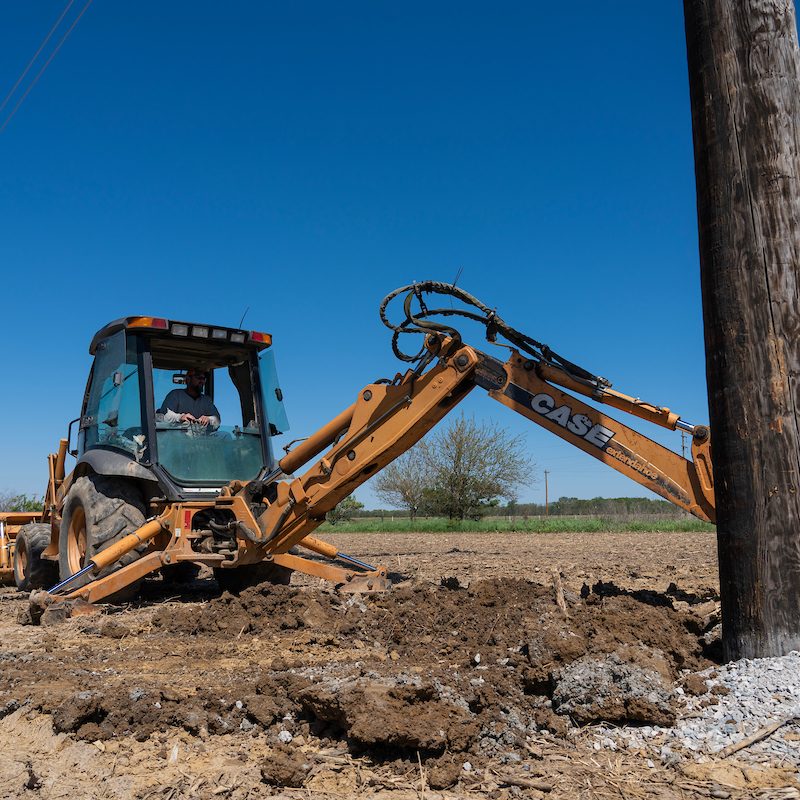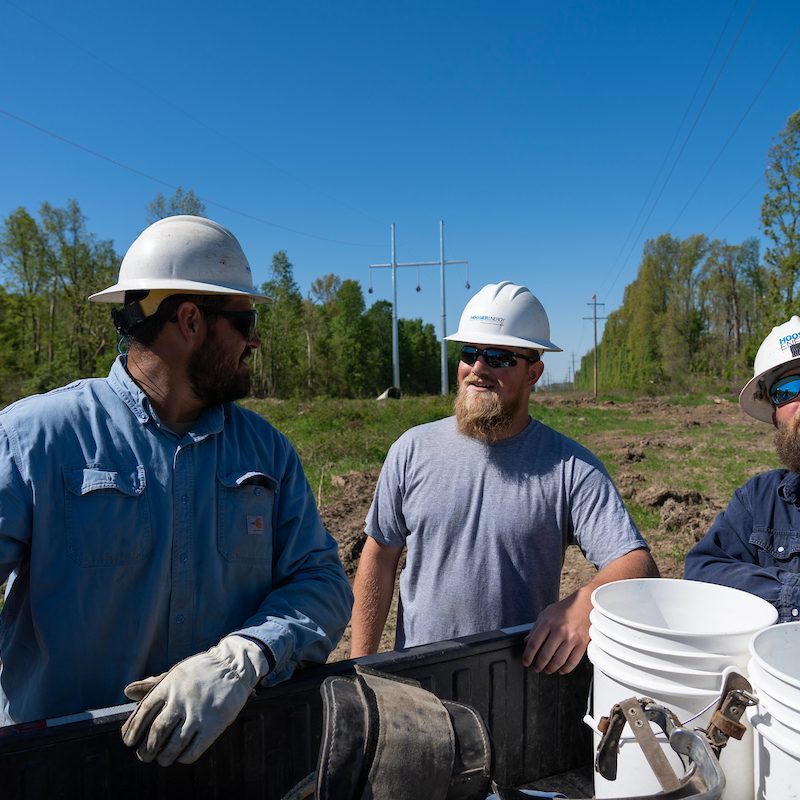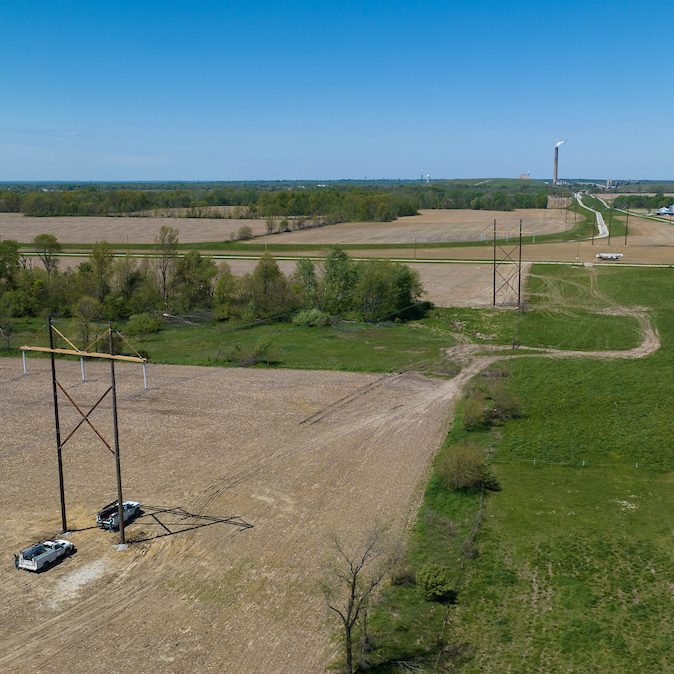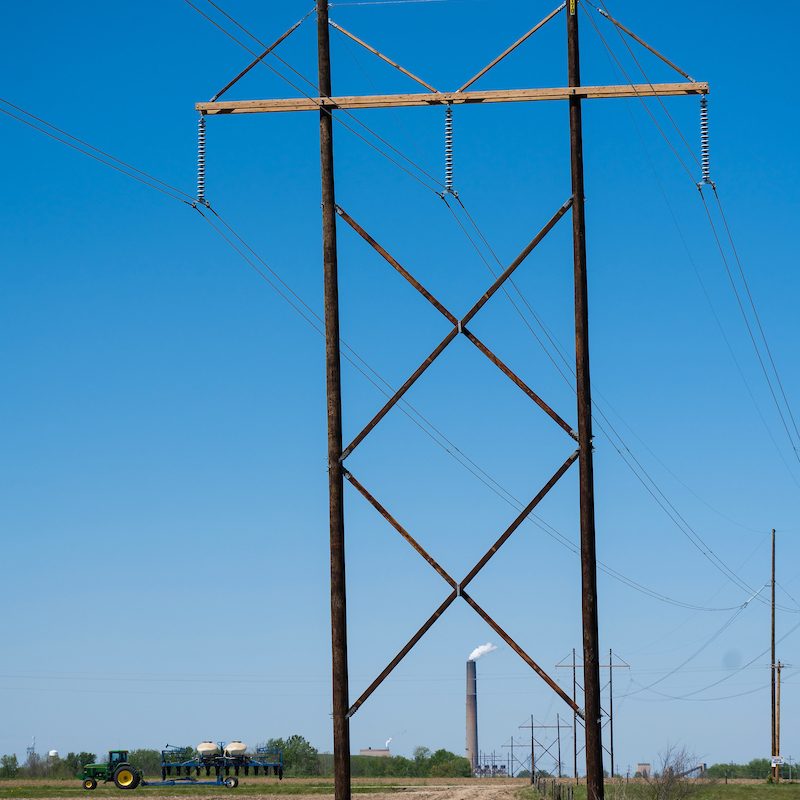“You’re never 100% prepared for anything.”
For Hoosier Energy Line Foreman Aaron Price, those words were never truer than on March 31, 2023, when a line of storms and tornadoes blasted their way through Sullivan County and into Owen County.
With the severe weather moving through in the late evening hours, it wasn’t until daylight the next morning that the full extent of the damage was revealed.
“We spent all night patrolling the 69 kV issues,” Price said. “Then that morning we finally saw the damage on the 345 kV line and were absolutely shocked. There were 17 345 kV structures (the tall towers) we were dealing with.
“The feeling we had when we saw the damage – we were awestruck. Never thought it would happen. Our whole year just changed.”
Price recently spoke with GridLines about that change and dealing with severe storms.
Q: First, you know bad weather’s coming, how do you prepare?
A: We make sure all the equipment is fueled up and fully stocked, the off-road machines are fueled up and that everybody has all the materials they need, but still a wide variety of things can happen.
Q: How do you go about the process of assessing the damage after the storm?
A: Initially, we’ll get a call that so-and-so line section has had a fault. We’ll work with System Control to figure out where we need to start looking for potential problems and what switches we can open or close to return as many member-consumers back to power as possible. Basically, system restoration is the No. 1 priority.
Then we start looking for issues. We’re able to use a digital fault recorder to assess things, and our meter relay technicians get a good estimate on where a fault might’ve taken place. We patrol the line in each direction from that location looking for issues. They’ll give me a pole number and go from there.
There are a lot of phone calls involved. The first couple of days after this tornado, I had hundreds of phone calls and a lot of people to keep on track. As new info comes in, we have to give everybody the update, so the whole game plan and priority list can change fast based on new information. Most of that communication is just done by cell phone until we’re in proximity in the field to use the radios.
Q: How do you decide where to start – number of outages, how easy or difficult the problems are, etc.?
A: One of the trickiest situations is deciding what to prioritize. Some of the factors we use are the number of member-consumers out and the amount of time it will take to get member-consumers back on.
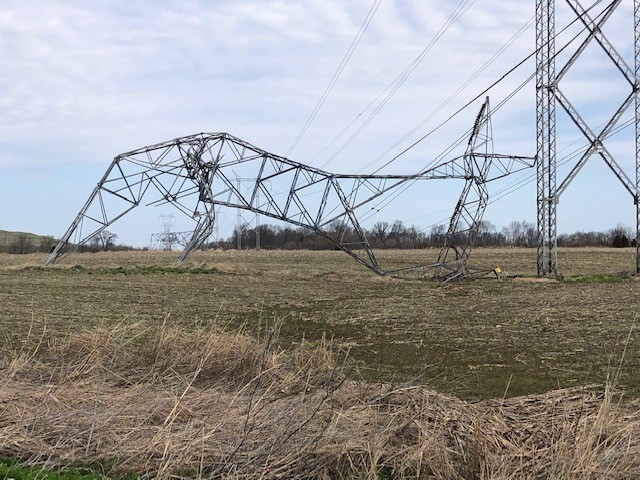
The 345 kV line we’re still working on, it sends a lot of power across the state, but the amount of work needed has taken weeks. The 69 kV lines we had damage on, some of them we were able to get back on within a day.
The Hoosier Energy crews started on the 69 kV stuff first – it’s more of a direct-to-consumer line going straight to distribution substations whereas the 345 kV line goes to primary substations and then another stop before it goes to lines that go to people’s homes.
Q: Multiple issues mean long hours for the folks in the field. How do you keep everyone fresh and still get work done?
A: That’s a complicated balance. We’ve all been working really long hours and getting tired, but it’s up to the individuals to make sure they get the rest they need to work safely and keep their families up and running and take care of their personal business. There are a lot of people out there have been stretching themselves thin but doing it in a safe manner.
We’re starting to see a little bit of light at the end of the tunnel. One section of the job is mostly completed, just needs some finishing touches put on it. We just set the last structure, so there are no more poles to set. We’ve still got to do some wire work, and there’s quite a bit of that ahead.
Q: What have you guys learned after dealing with such an impactful event?
A: I think we’ve learned some lessons in how to best prioritize and, for lack of better word, triage a big storm like this. I think a lot of us feel that given the scale of this situation we would’ve been better off to drop back, take some deep breaths and look at the grand scheme of things a little longer before starting to act.
We’ve learned a lot with a lot of new faces out here, and we’ve also learned that it’s a full Hoosier Energy team effort, far from just being a line department issue. This has been all-hands-on-deck with a lot of different departments, both company and union, coming together to contribute.
I know the line crew is thankful for the support we’ve had to do our jobs.
